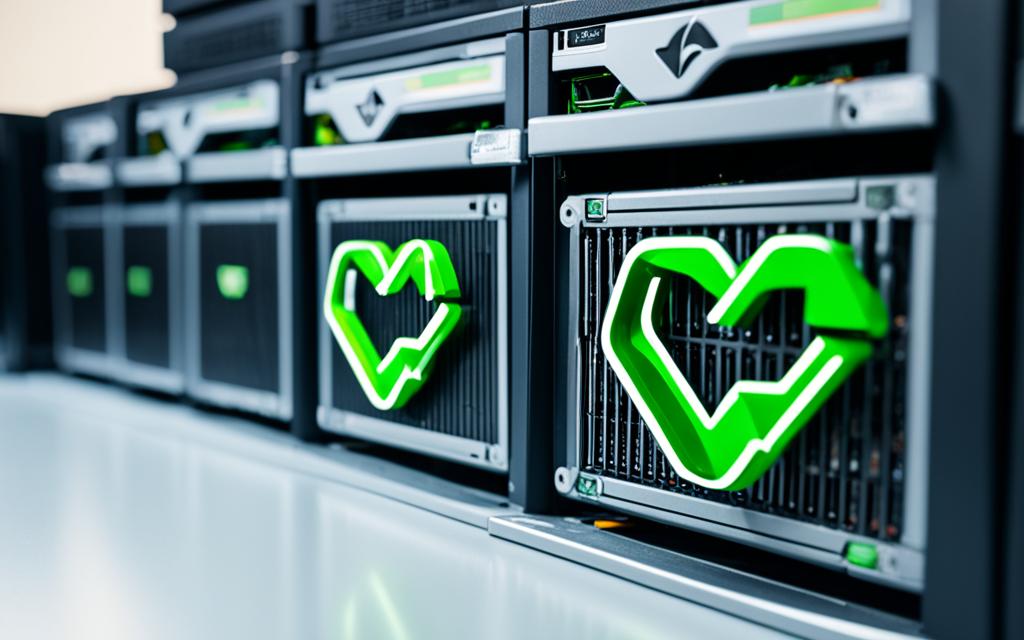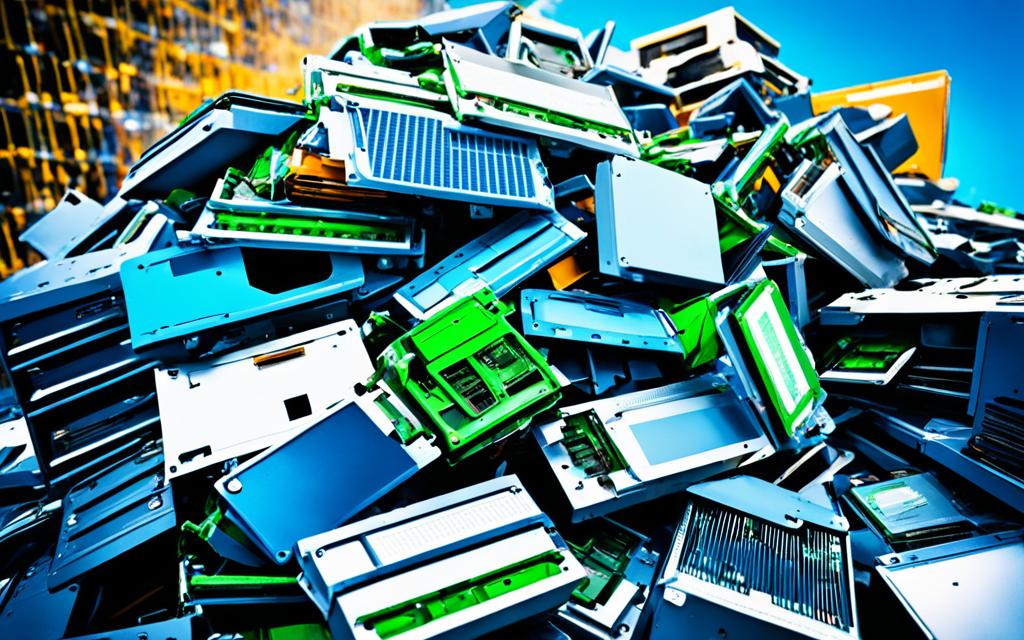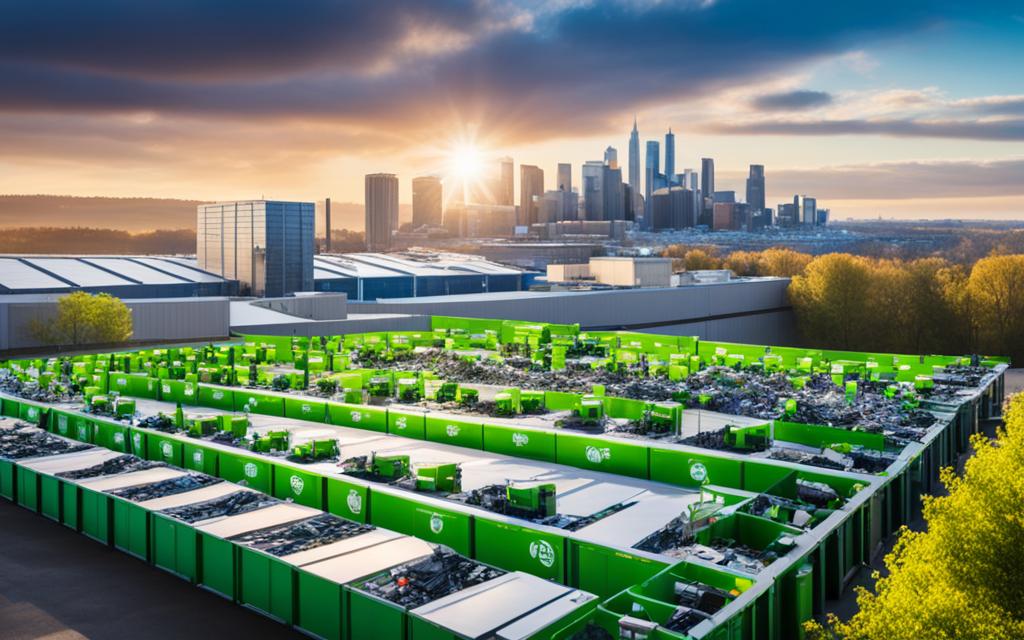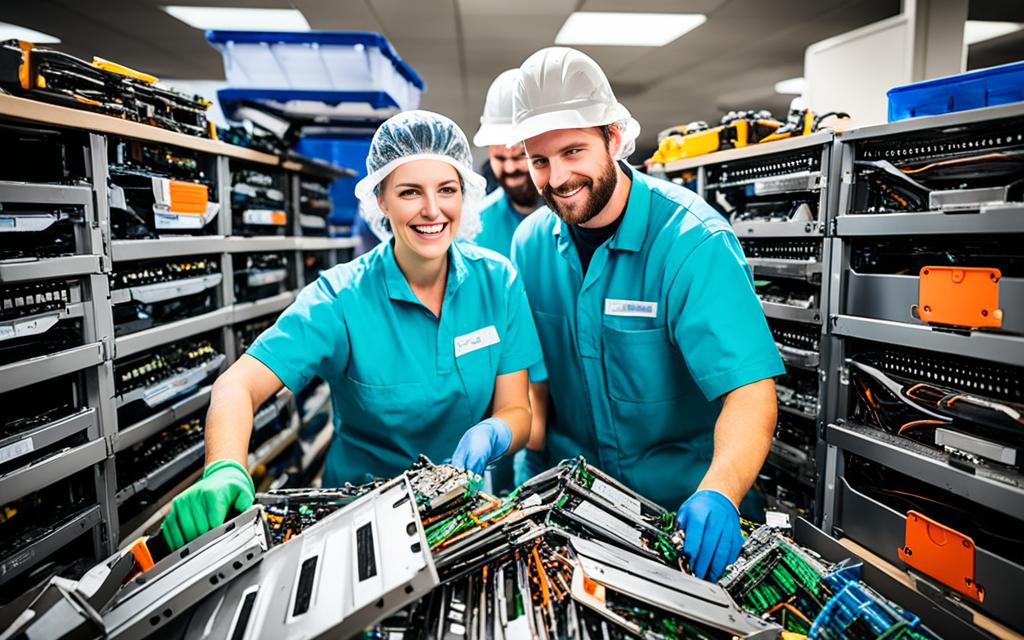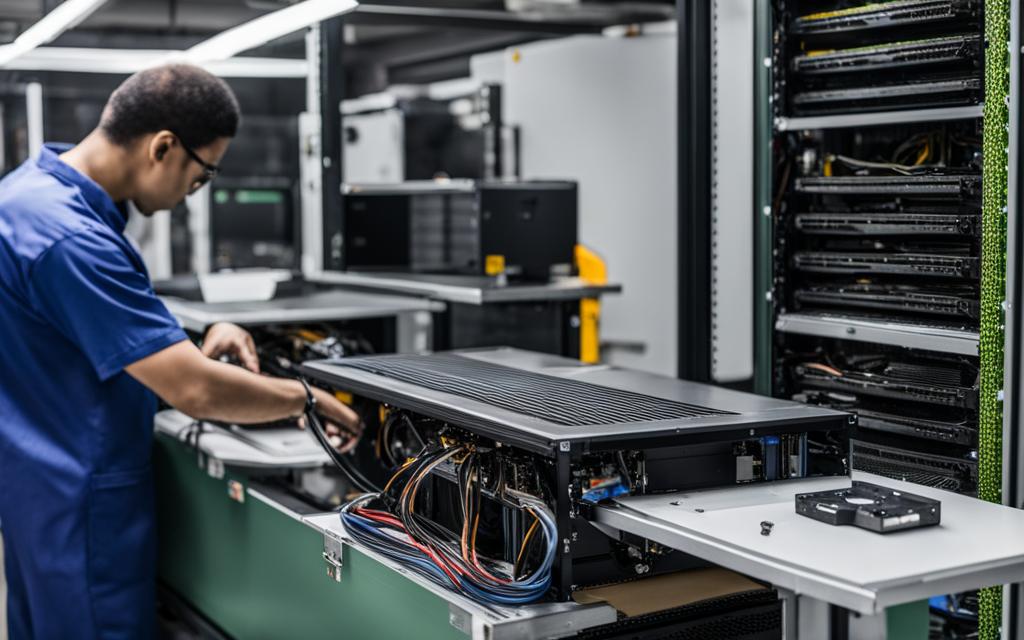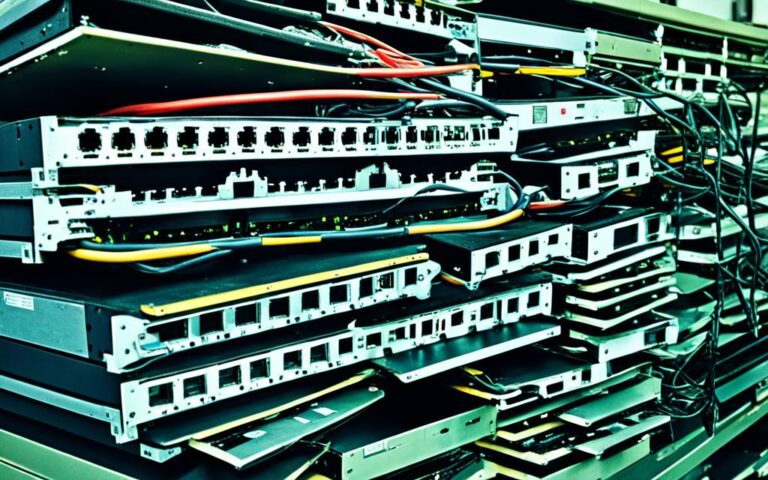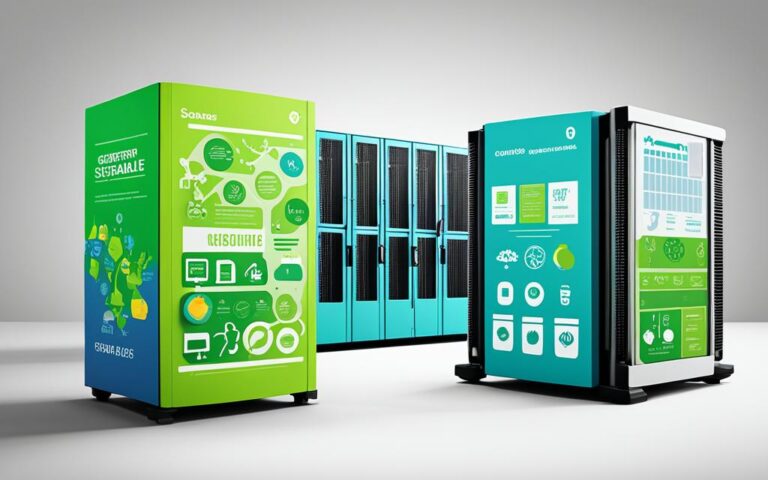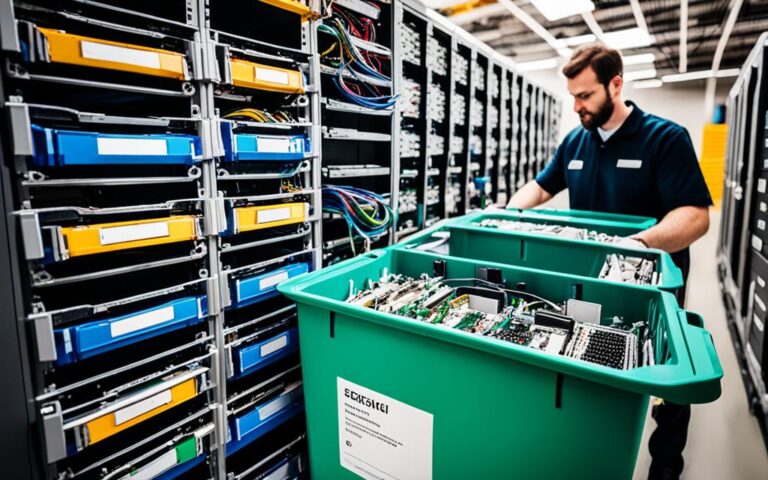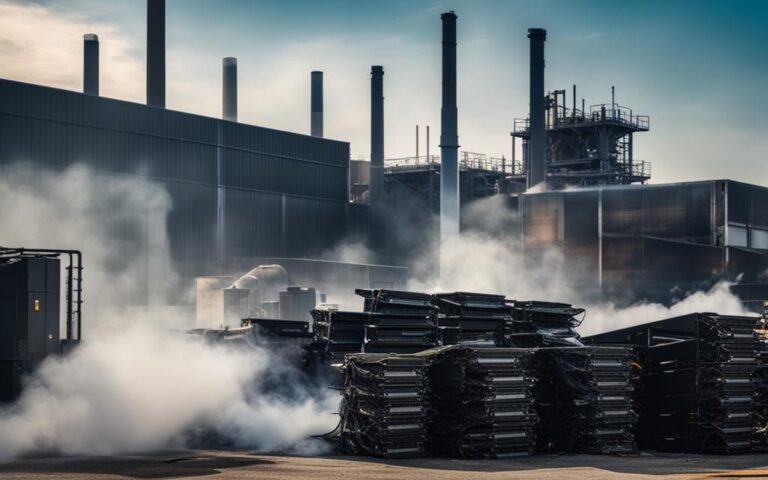Server Recycling vs. Server Refurbishing: Understanding the Differences
When it comes to managing decommissioned server hardware, two options stand out: server recycling and server refurbishing. These approaches offer different paths to sustainability and responsible IT practices. Understanding the differences between the two is crucial for UK businesses looking to make informed and environmentally conscious decisions.
Server recycling involves the proper disposal and recycling of hardware components. This process ensures that e-waste is minimized and valuable materials are recovered and reused. On the other hand, server refurbishing focuses on repairing and refurbishing the hardware for reuse in data centers. By extending the life cycle of server hardware, server refurbishing reduces waste and conserves resources.
Both server recycling and server refurbishing play vital roles in reducing the environmental impact of the IT industry and promoting the circular economy. By choosing the right approach, businesses can contribute to a more sustainable future while also considering the economic benefits of server refurbishing. Let’s delve deeper into the processes and benefits of each method to gain a better understanding of the differences.
Continue reading to discover the intricate details of server recycling and server refurbishing processes.
The Process of Server Recycling
In the world of IT, server recycling plays a crucial role in promoting sustainability and reducing electronic waste. Understanding the process of server recycling is essential to making informed decisions and contributing to a greener future. Let’s dive into the steps involved in the server recycling process:
- 1. Data Sanitization: Before decommissioning the server racks, it is essential to remove any sensitive customer data securely. The process of data sanitization ensures that all data is permanently erased, protecting the privacy and security of your business and clients.
- 2. Decommissioning and Functionality Testing: Once the customer data is sanitized, the server racks are decommissioned. This involves carefully dismantling the hardware components and assessing their functionality. Through meticulous testing, any faulty components can be identified for repair or replacement.
- 3. Reverse Logistics Hubs: The server racks and hardware components are then transported to reverse logistics hubs. Here, specialized facilities handle the demanufacturing of the server racks into individual components. This allows for efficient handling and processing of each part for further analysis and refurbishment.
- 4. Failure Analysis (FA) Lab: The demanufactured components are sent to the Failure Analysis (FA) lab, where expert technicians inspect them for physical damage and determine necessary repairs. This meticulous analysis ensures that only functional components move forward in the recycling process.
- 5. Repairs and Testing: After inspection, any damaged components are repaired by skilled technicians in the FA lab. Once repairs are complete, all components undergo rigorous testing to ensure their functionality and suitability for reuse.
- 6. Return to Inventory: Finally, the functional components are returned to inventory, where they are made available for reuse in an AWS data center. This allows for the optimization of resources and reduces the need for new hardware, thus minimizing environmental impact and promoting sustainability.
The Benefits of Server Recycling
Server recycling not only promotes sustainability but also offers significant benefits to businesses. By participating in server recycling, your company can:
Reduce electronic waste and minimize the environmental impact of IT operations.
Protect sensitive data by securely sanitizing customer information.
Conserve resources by reusing functional components, minimizing the need for new hardware.
Optimize costs by leveraging refurbished components instead of purchasing brand-new equipment.
By embracing server recycling, you contribute to a more sustainable IT industry and make a positive impact on the planet.
| Server Recycling Process | Benefits |
|---|---|
| Data Sanitization | Protects data privacy and security |
| Decommissioning and Functionality Testing | Identifies faulty components for repair or replacement |
| Reverse Logistics Hubs | Efficient handling and processing of hardware components |
| Failure Analysis (FA) Lab | Thorough inspection and repair of components |
| Repairs and Testing | Ensures functionality and suitability for reuse |
| Return to Inventory | Optimizes resources and reduces environmental impact |
By following the server recycling process, you can actively contribute to a more sustainable future while reaping the benefits of optimized costs and resource conservation. It’s time to make a positive impact and join the server recycling movement.
The Process of Server Refurbishing
Server refurbishing involves the repair and refurbishment of decommissioned server hardware for reuse. After the server hardware is decommissioned and tested for functionality, the individual components are evaluated for reuse. The components are then sent to the Failure Analysis (FA) lab, where they are inspected for physical damage and repaired if necessary. Once repaired, the components undergo testing to ensure their functionality and performance.
This testing may involve running the components in testing rigs that simulate the environment of a data centre server. The goal of server refurbishing is to extend the life cycle of server hardware and reduce e-waste by reusing functional components in the IT industry.
“Our commitment to server refurbishing allows us to provide businesses with a sustainable solution for their IT hardware needs. By repairing and reusing functional components, we not only reduce e-waste but also offer cost-effective options for businesses looking to upgrade their server infrastructure.” – John Smith, CEO of GreenTech Solutions
The Environmental Impact of Server Recycling
Server recycling is a vital component of sustainable IT practices. By properly recycling decommissioned server hardware, businesses can significantly reduce e-waste and contribute to a greener future. The environmental impact of server recycling goes beyond just waste reduction; it encompasses the conservation of valuable materials and the avoidance of hazardous substances that can harm the environment.
When servers are recycled, toxic materials such as mercury, lead, and brominated flame retardants are safely contained and prevented from contaminating the ecosystem. This ensures the protection of both human health and the natural environment. By responsibly recycling these hazardous substances, we can mitigate the potential risks they pose and safeguard our planet.
Additionally, server recycling plays a crucial role in resource conservation. By recycling server hardware, we reduce the need for mining and refining new materials, thus conserving precious natural resources. This sustainable approach helps minimize the ecological impact associated with the extraction and production of electronic devices.
Considering the staggering amount of e-waste generated globally, server recycling has become an imperative step towards reducing the environmental impact of the IT industry. In the United States alone, an estimated 12.3 million tons of electronic waste are discarded annually. By recycling servers and other electronic equipment, we can divert a significant portion of this waste from landfills and ensure that valuable materials are recovered and reused.
Server recycling is key to preserving our environment and fostering a sustainable future. By embracing responsible disposal practices and promoting circular economy principles, businesses can make a meaningful impact on reducing e-waste and conserving natural resources.
| Benefits of Server Recycling | Environmental Impact |
|---|---|
| Reduces e-waste | Protects the environment from hazardous substances |
| Conserves natural resources | Reduces the need for mining and refining |
| Promotes circular economy | Minimizes ecological impact of electronic production |
| Recovers valuable materials | Diverts electronic waste from landfills |
The Benefits of Server Refurbishing
Server refurbishing offers several benefits, both from an environmental and economic standpoint. By refurbishing decommissioned server hardware, valuable resources are conserved, and e-waste is reduced. This helps promote the circular economy in the IT industry.
Additionally, server refurbishing can be a cost-effective solution for businesses. By reusing functional components, businesses can save money on purchasing new hardware. Refurbished server hardware can also provide performance comparable to new hardware, making it a viable option for businesses looking to upgrade their IT infrastructure.
Overall, server refurbishing offers a sustainable and cost-effective approach to managing server hardware. By extending the life cycle of server hardware through refurbishment, businesses contribute to reducing the environmental impact of e-waste while benefiting from cost savings and reliable performance.
Conclusion
Server recycling and server refurbishing are two important approaches in managing decommissioned server hardware. While server recycling focuses on the appropriate disposal and recycling of hardware components, server refurbishing involves repairing and refurbishing components for reuse. These methods play a crucial role in reducing e-waste, conserving resources, and promoting sustainability in the IT industry.
Understanding the differences between server recycling and server refurbishing is essential for businesses to make informed decisions about responsibly managing their server hardware. Whether choosing to recycle or refurbish, it is vital to prioritize sustainable practices and contribute to the circular economy in the UK.
For more information on server recycling in the UK, please visit https://it-recycle.uk/server-recycling-uk/.
FAQ
What is server recycling?
Server recycling involves the proper disposal and recycling of decommissioned server hardware components. This process helps reduce e-waste and promotes sustainability in the IT industry.
What is server refurbishing?
Server refurbishing is the repair and refurbishment of decommissioned server hardware for reuse. It extends the life cycle of server hardware and reduces e-waste by reusing functional components.
What is the difference between server recycling and server refurbishing?
Server recycling focuses on the proper disposal and recycling of hardware components, while server refurbishing involves repairing and refurbishing components for reuse.
Why is server recycling important?
Server recycling helps reduce e-waste, conserve resources, and promote sustainability in the IT industry. It ensures proper disposal of toxic materials and reduces the need for mining and refining new materials.
What are the benefits of server refurbishing?
Server refurbishing reduces e-waste, conserves resources, and promotes the circular economy in the IT industry. It can be a cost-effective solution for businesses and provides performance comparable to new hardware.

